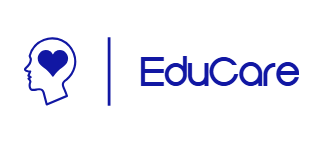If you’ve noticed attendance wobbling, you’re not alone. Chronic absenteeism—missing 10%+ of school—spiked nationally during and after the pandemic and, while improving, is still well above pre-2020 levels. The U.S. Department of Education reports about 28% of students were chronically absent in 2022–23, down from 31% the year prior but still far too high. Translation: mental health and engagement aren’t “nice to haves”; they’re the oxygen line for learning. U.S. Department of Education
Zoom out for a second. CDC’s latest Youth Risk Behavior data continue to show significant mental health challenges, with disparities across gender identity, sexual orientation, and race/ethnicity. Students who feel connected at school fare better; “connection” isn’t fluffy—it’s protective. That means advisory periods, trusted adults, and identity-affirming spaces are not window dressing; they are prevention. CDC+1
So how do we turn this into a plan you can actually run next week?
1) Treat absenteeism as a Tier 1 vital sign
In a Multi-Tiered System of Supports (MTSS), attendance is not just an admin problem—it’s a universal screener for campus well-being. Schools implementing MTSS with fidelity (even in rural or resource-stretched settings) lean on simple, repeatable moves: clear schoolwide routines, proactive behavior teaching, and fast feedback loops when data blip. If your Tier 1 calm-corner is a chair in the hallway, you don’t have Tier 1 yet. Start by pairing weekly attendance dashboards with morning meeting routines and staff micro-scripts for connection (“name–need–next step”). Frontiers
2) Build Tier 2 that students actually want to attend
Small-group, time-limited supports win here: brief CBT skills, check-in/check-out, and “beat the bell” mentoring for students trending toward 10% absence. Keep the groups short (6–8 weeks), make entry and exit criteria transparent, and publish the schedule so teachers see it’s not a black box. The research drumbeat is the same: when schools deliver timely, structured mental health supports, attendance improves. Taylor & Francis Online+1
3) Fund like you mean it (hello, California CYBHI!)
This part is unglamorous and essential. Many districts leave money on the table. Recent CMS and ED efforts explicitly support expanding school-based services—including behavioral health—through Medicaid, with fresh guidance and technical assistance for states and LEAs. If your state has updated its “free care” policy, you may be able to claim for screenings, individual/group therapy, care coordination, and more. Action item: ask your district leads where you are in adopting new CMS guidance and whether your provider documentation aligns. Medicaid+1
4) Use AI for insight, not surveillance
AI can help summarize patterns (e.g., which days see the most tardies; which transitions trigger referrals) and free up humans for actual care. But there’s a line. Districts adopting AI monitoring tools for “safety” have faced student backlash and lawsuits over over-flagging and privacy. If you’re exploring AI, aim for decision support, not student surveillance: think data dashboards that aggregate de-identified trends and reduce paperwork, paired with strong policies (consent, transparency, opt-outs, and human-in-the-loop review). Also, teach students digital and AI literacy so the tech isn’t a mystery box. DATIA K12+2The Washington Post+2
5) Make connection ridiculously easy
Little mechanics, big payoff:
-
90-second homeroom check-ins: name, mood, one goal. Log only what you’ll use.
-
“First 5” routines in every class (predictable opener to lower anxiety).
-
Fast-track passes for Tier 2 groups so students aren’t choosing between help and Algebra.
-
Family micro-touches: two positive calls/texts before the first concern call.
Quick start kit for next month
-
Pick one universal routine (e.g., “First 5”) and train it in every classroom.
-
Stand up one Tier 2 group (CBT skills, 6 sessions, lunch block, clear referral in/out).
-
Map your billing path (who’s billing what today; what could be added under new guidance).
-
Audit your data tools (if AI is in the mix, confirm privacy, purpose, and human oversight).
-
Chase connection (advisory or mentoring that students can describe without rolling their eyes).
None of this is magic. It’s rhythm. Attendance becomes a downstream signal that your culture, supports, and funding are pointing the same direction. Tighten one, the others move.

